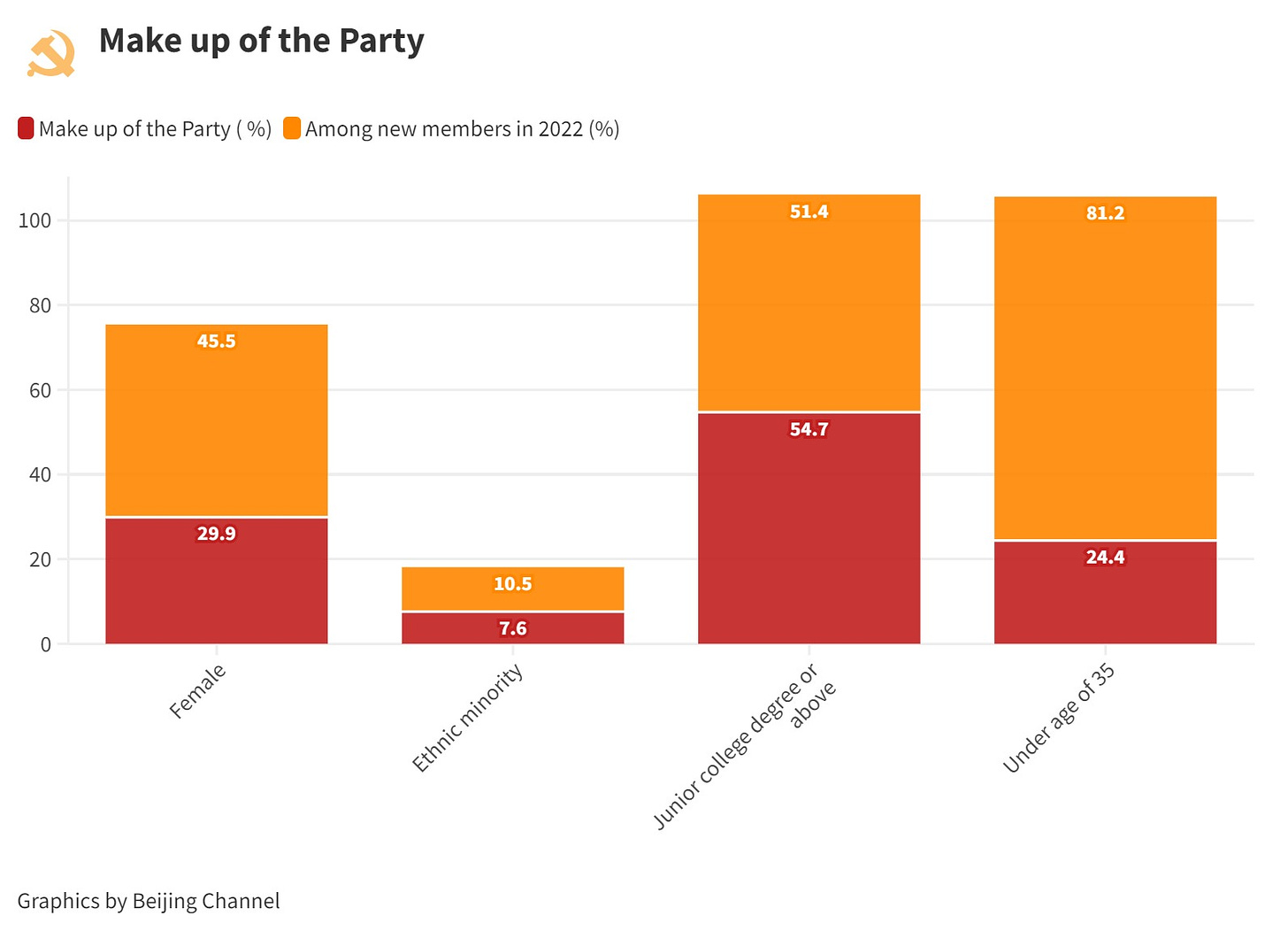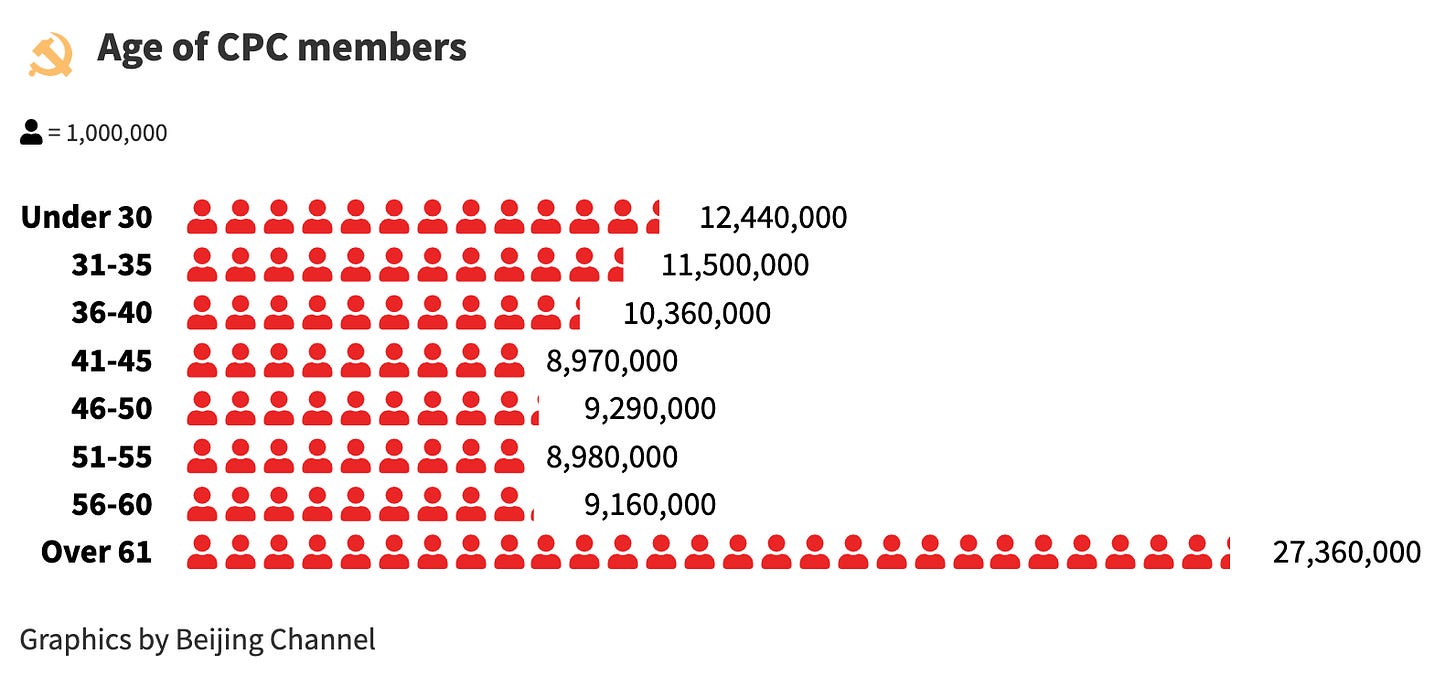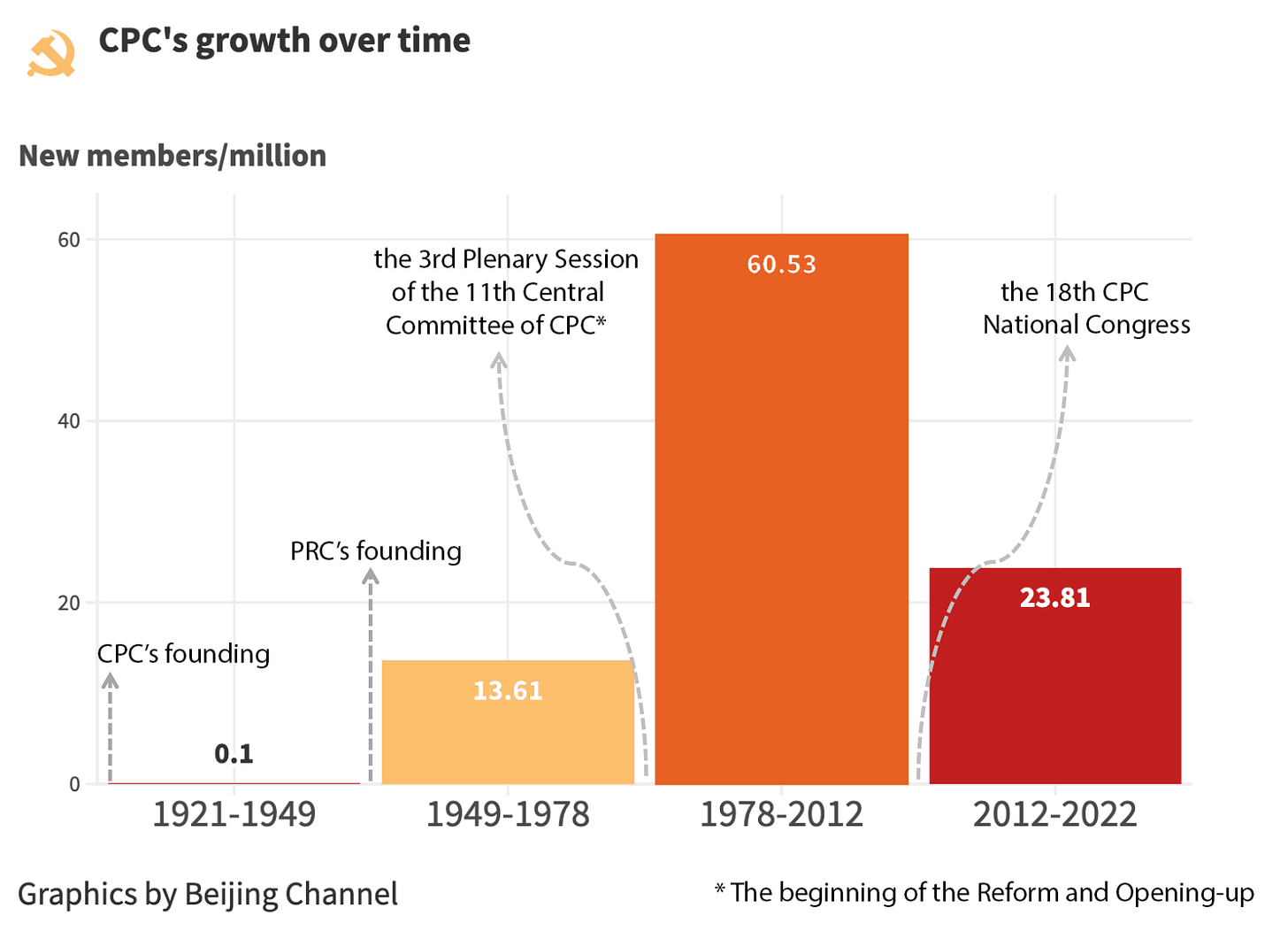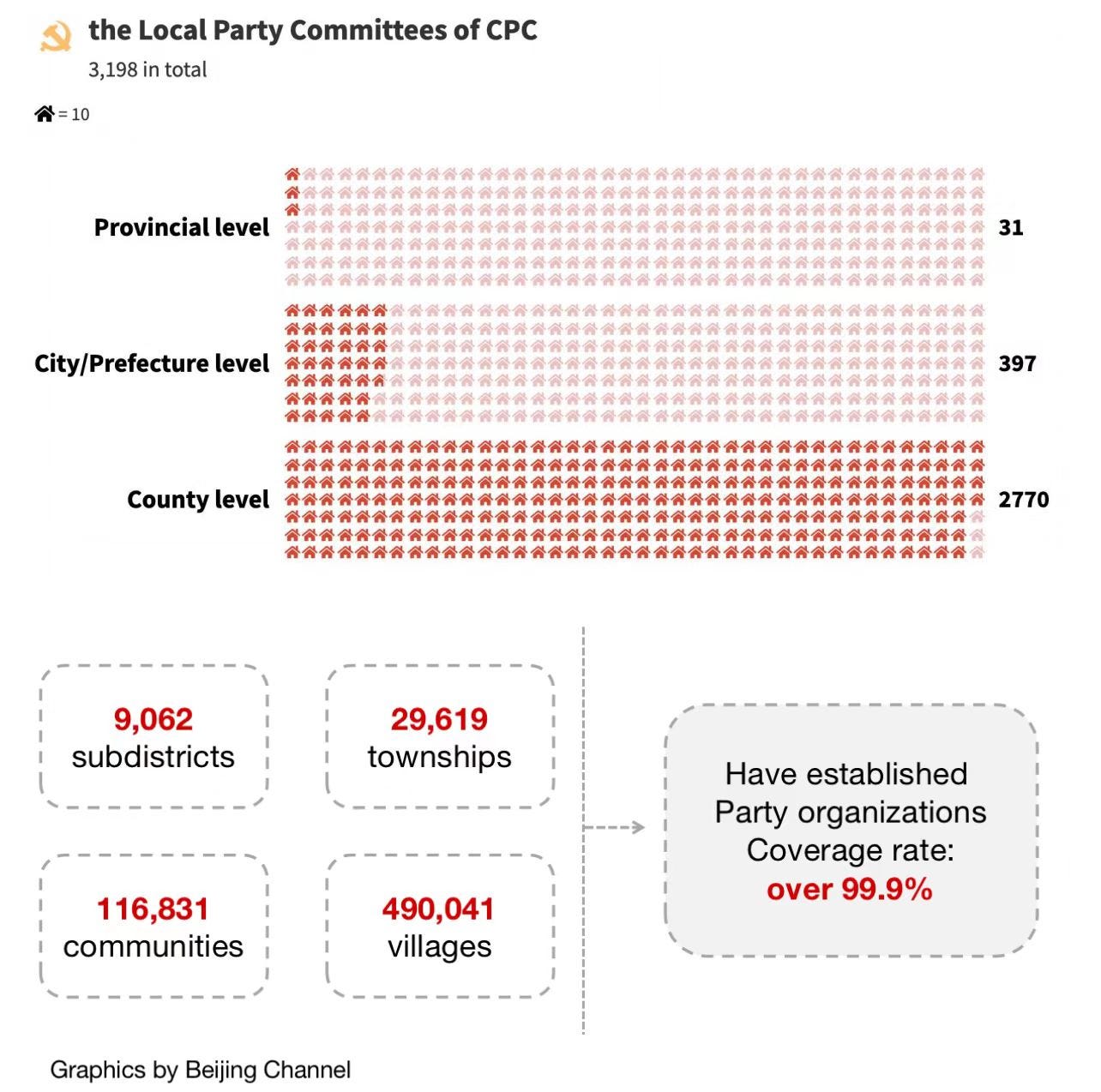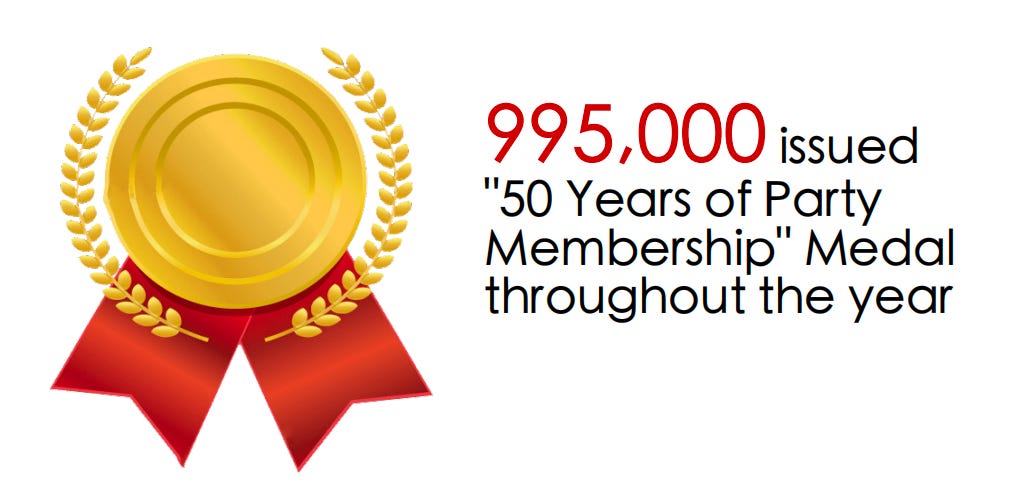In Graphics: Annual CPC number update
Following a tradition, the Organization Department of the CPC Central Committee released its annual CPC number statistics update on June 30.
The tradition is to unveil the latest numbers one day before July 1, or the anniversary of the Party’s founding.
Beijing Channel did a graphics report of the numbers last year, which was well received, so I thought we could start a tradition of our own and make the CPC number update an annual coverage for this newsletter.
Following are this year’s numbers.
The Party added 2.45 million new members (net gaining 1.33 million members) in 2022, reaching 98.04 million in total, inching closer to the 100 million mark. Both the growth and growth speed (1.4%) are lower than in 2021, which net gained 3.43 mln members, registering a 3.7% growth.
The number of party activists and applicants remained stable at about 10 and 21 millions respectively, signifying that Party membership is attractive for many.
As with past years, the statistics look at the makeup of party members in terms of gender, ethnicity, education degrees, and age. In absorbing new members, the Party seeks a more balanced representation in each of the categories.
Females make up 29.9% of all Party members, half a percentage point higher than last year. However, female representation is much more balanced among new members, at 45.5%.
The Party is also moving toward more ethnic diversity, with ethnic minority members making up 7.6% of all members, 0.1 percentage points than last year. 10.5% of new members come from an ethnic group.
In this official explainer, the increased representation of female and ethnic minority members is clearly described as “optimization of the structure of Party members“, suggesting that pursuing a more gender-equal and ethnically diverse membership makeup is a conscious choice by the Party leadership.
As with past practice, the Party strongly favors those under 35 for new members. But the percentage of those holding a junior college degree or above among new members is consistently lower than those among existing members. This could partially be explained by the fact that many people obtain Party membership while in school and would graduate after entering the Party.
The occupation makeup of new party members is consistent with the past year.
Given the small change in overall Party membership last year, the above two graphs stayed pretty much the same as last year.
Because the Party has established organizations over 99.9% of administrative zones, the changes in the numbers could only reflect the change in the number of the administrative zones, rather than changes to the party structure. Compared with last year, China seems to have lost villages(行政村村) and townships (乡镇) but had more subdistricts (街道) and communities (居委会). Given the prior two are rural administrative zones and the latter are urban zones, this change is in accordance with the urbanization process of China.
A slight addition to last year’s statistics is the mention of awarding the “50-year membership“ medal to those who've been in the party for over half a century.
A total of 995,000 medals were given out in 2022.
The CPC started giving out such medals in 2021 when it celebrated its 100th birthday and said will continue the practice. The medal is made of copper and zinc.
Wonder if they’ll come up with 40-year membership medals or something in the future.
The graphics in this newsletter is done by Liao Hongqing and Zhang Xinyi, who are interns for Beijing Channel.




